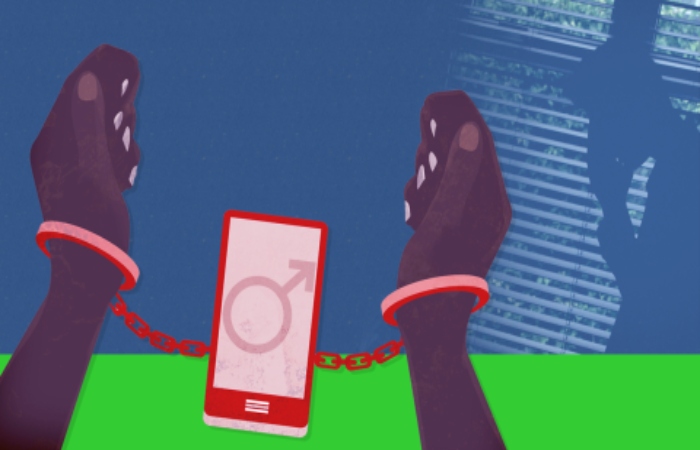Introduction
Technological Domestic Violence: There are many ways to commit misuse through these media, but there are ways to protect yourself and escape from such situations. For example, digital security specialists recommend not using computers or phones that someone else has accessed.
It may remotely control those computers and see the pages you visit. Or maybe, it keeps track of your call logs and text messages and constantly fills up your junk mail.
Using Technology To Control And Technological Domestic Violence

Avast, a digital security and privacy company, and Refuge, an organization against domestic violence in the United Kingdom, listed the 10 devices connected to the Internet (IoT) that are most frequently used to violate women.
Although these devices serve to offer better comfort to the home, they are used to harm and exercise control over victims.
Refuge says there has been an increase in reports of women seeking help to ensure the technology is not used against them.
The Most Reported Devices Were The Following:
- Ring doorbells
- Google HomeHub
- Nest systems and smart thermostats
- smart tvs
- smart plugs
- Fitness trackers and smartwatches
- wireless systems
- smart locks
- video surveillance cameras
Technological Misuse And Technological Domestic Violence
The research found that 48% of 2,000 women surveyed could not name a single device that could facilitate misuse. This figure increased to 60% among women over 55 years of age.
In addition, 1 in 4 women stated that access to these devices has not been shared equitably and transparently; even 18% have no control over Wi-Fi settings, while their partner does.
41% of UK women say their partner knows their personal device passwords and 72% have given them to them.
“Many women may not be able to spot the signs that they have been force to give their password to an abusive partner, or are unaware that a vicious member of their household is spying on them through their Wi-Fi. Unfortunately, the reality is that one in four women will experience some form of domestic abuse in their lifetime, and tech abuse is increasingly part of that problem.
Getting away from domestic violence is not easy. Even being in a safe place the aggression can continue. How? Through messages or video calls made from the cell phone, tablet, computer or any other technological equipment.
This is a fairly common tactic used by both men and women to scare their victims. It predominates among young people who live in the same home and have an unhealthy relationship.
Development Of Technological Domestic Violence
These days, almost everyone has a PC, laptop, or smartphone close at hand. We are always connect for personal or work issues. Unfortunately, batterers use the same technology, but in a different way, to continue domestic violence.
If you share the use of those devices with an abusive partner or someone else, you may be being monitor without realizing it. That kind of person is very cunning and, even if you no longer live with them, they always look for a way to continue with the mistreatment.
It is important that you know the different ways in which technology will be used against you. That way, it’s easier to take steps to protect yourself and stop abuse.
Social Platforms For example Of, Technological Domestic Violence

Social networks are one of the means most frequented by harassers. If they know the identification of your accounts, they enter from any machine to review your data and discover with whom you exchange information.
Once inside, they review your likes, comments, photos, videos and leave offensive or frightening messages. Of course, that creates fear and makes you want to close your profile, but that reaction does not guarantee that the harassment will end.
For what reason? Because that’s just one strategy. When the possibilities of using technology for these purposes are reduce, they desperately look for other ways to do it, sometimes more dangerous, according to experts from the NNEDV.
Although you have the possibility to block them, they use fake profiles to get back in, so it is difficult to run away from them. The best option is to document yourself and plan security measures.
How Do Perpetrators Of Technological Domestic Violence?
To obtain the location and private information that they would not otherwise obtain, stalkers intervene in computers and cell phones by installing spyware or spaywer (English denomination).
Similarly, they install applications with Global Positioning System (GPS), which allow them to know where you are at a given time and what sites you have visited. This tracking mechanism is also connect to the car.
Some of the devices they use are capable of intercepting emails, calls, text messages and audios in a matter of seconds. Also, they are hard to spot, which allows them to keep hurting you.
Technological Domestic Violence Mail And Browsing History
It is an error not to log out of email login. Anyone is capable of accessing your mailbox, reviewing communications, and maliciously responding to messages by deliberately impersonating you.
Also, when you share your computer with someone else, it’s risky to leave search logs in your browsing history. All the activity you carry out on the Internet is reflect there, and can often compromise you.
Cyberbullies often dig into these places to get information from victims and manipulate them at will. For example, they could find data you don’t want anyone to know, threaten to publish it, or impersonate your identity.
Conclusion
protect yourself from technological domestic violence. Try limiting your introduction to social media while working through the problem. When you are online, think carefully about what you are going to publish, do not disclose data or photographs that reveal your location or who you are with.
Also Read: About Web Application- Definition and examples
Related posts
Featured Posts
What Is A Web Project? – Phases For Planning, and More
Introduction Web Project The term ” web project ” can designate different development types, including technical creation, content management, data,…
10 Benefits of Eating Roasted Gram
In this article, we will talk about the 10 benefits of eating roasted gram. The roasted gram is also known…


